Rare medieval remains uncovered in Glasgow
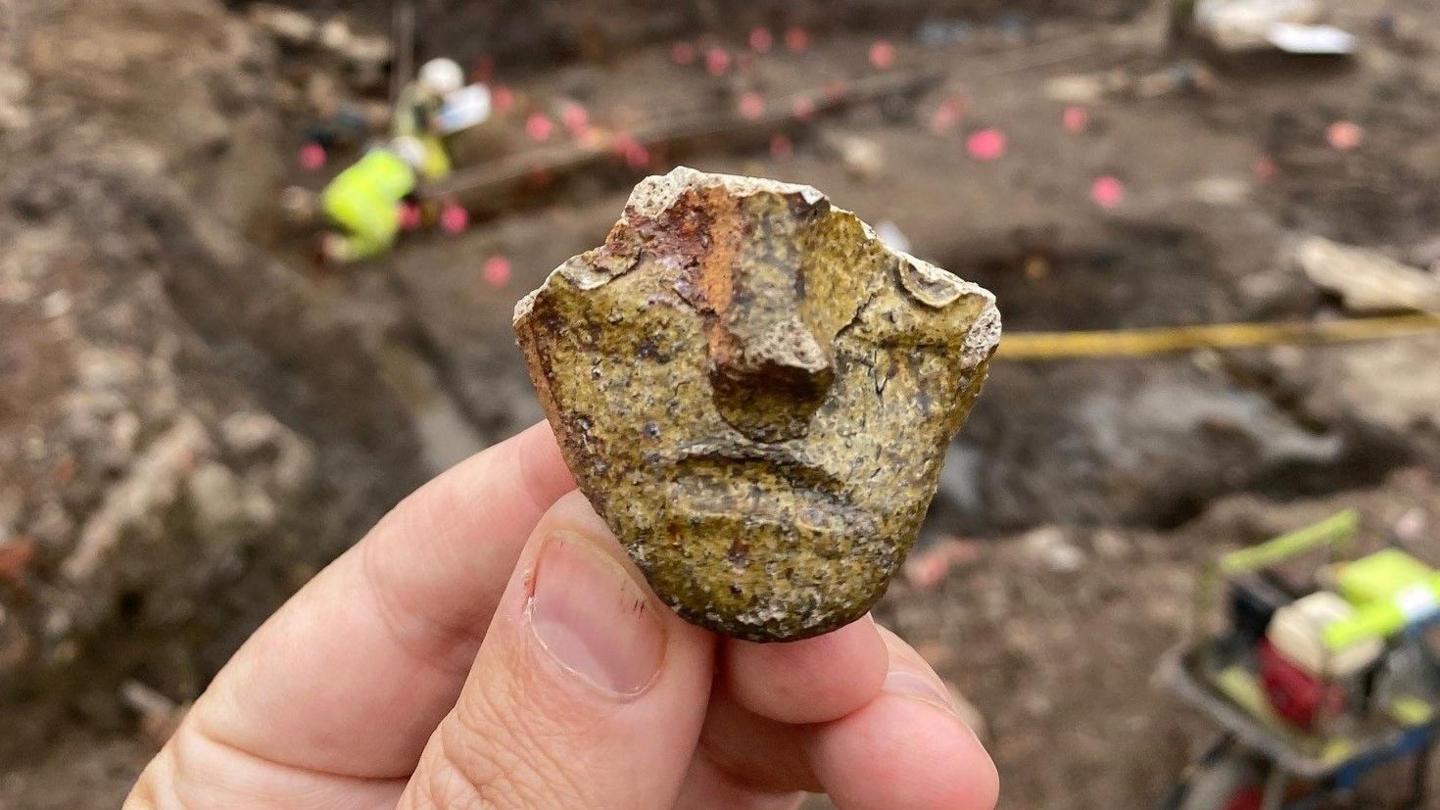
The bulk of the pottery dates to the 13th-14th Centuries
- Published
Rare medieval remains of early suburbs have been discovered in Glasgow city centre.
Guard Archaeology has uncovered pottery and rare, well-preserved wooden posts, with woven fencing, at a site in the Gallowgate area.
The discovery was made 4.5m (14.7ft) below the current street level at the Spoutmouth area, which is being developed into social housing.
Thomas Muir, who is leading the archaeology team, said: "This is a remarkable survival of organic archaeology in an area of the city that has witnessed substantial development over the many years since Glasgow was first established.
"A small sliver of medieval Glasgow that has somehow survived centuries of building and rebuilding."
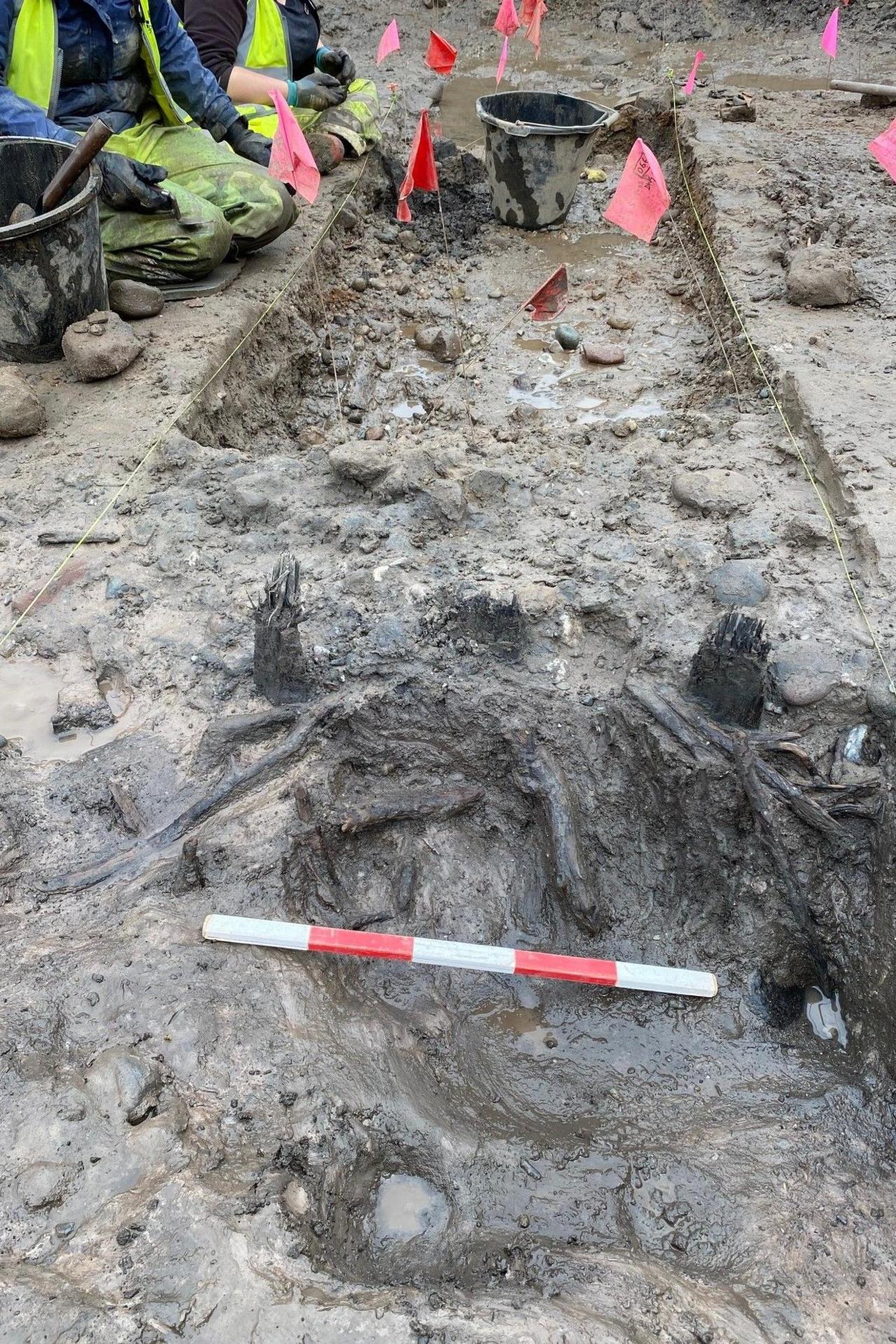
Rare, well-preserved wooden posts, with woven fencing, were discovered by the team
The team has unearthered 63 upright posts arranged in three lines defining three broad linear areas.
As they are so deep, the site is constantly flooding, but Mr Muir said this explained why the wooden remains had survived so long.
"Caught up in the wattle fencing are numerous sherds of medieval pottery, animal bone and other organic material," he said.
"This rare discovery of preserved wooden structures opens a window into Glasgow's past when it underwent its first wave of major expansion.
"It is no news that Glasgow will celebrate its 850th anniversary of receiving burgh status this year, but, remarkably, in the same year, we have discovered some evidence of those beginnings at Spoutmouth."
Bob Will, Guard Archaeology's medieval pottery expert, said: "The bulk of the pottery is a mix of medieval fragments, which date to around the 13th-14th centuries AD.
"The wattle fencing appears to be part of a very early eastward expansion of the medieval burgh."
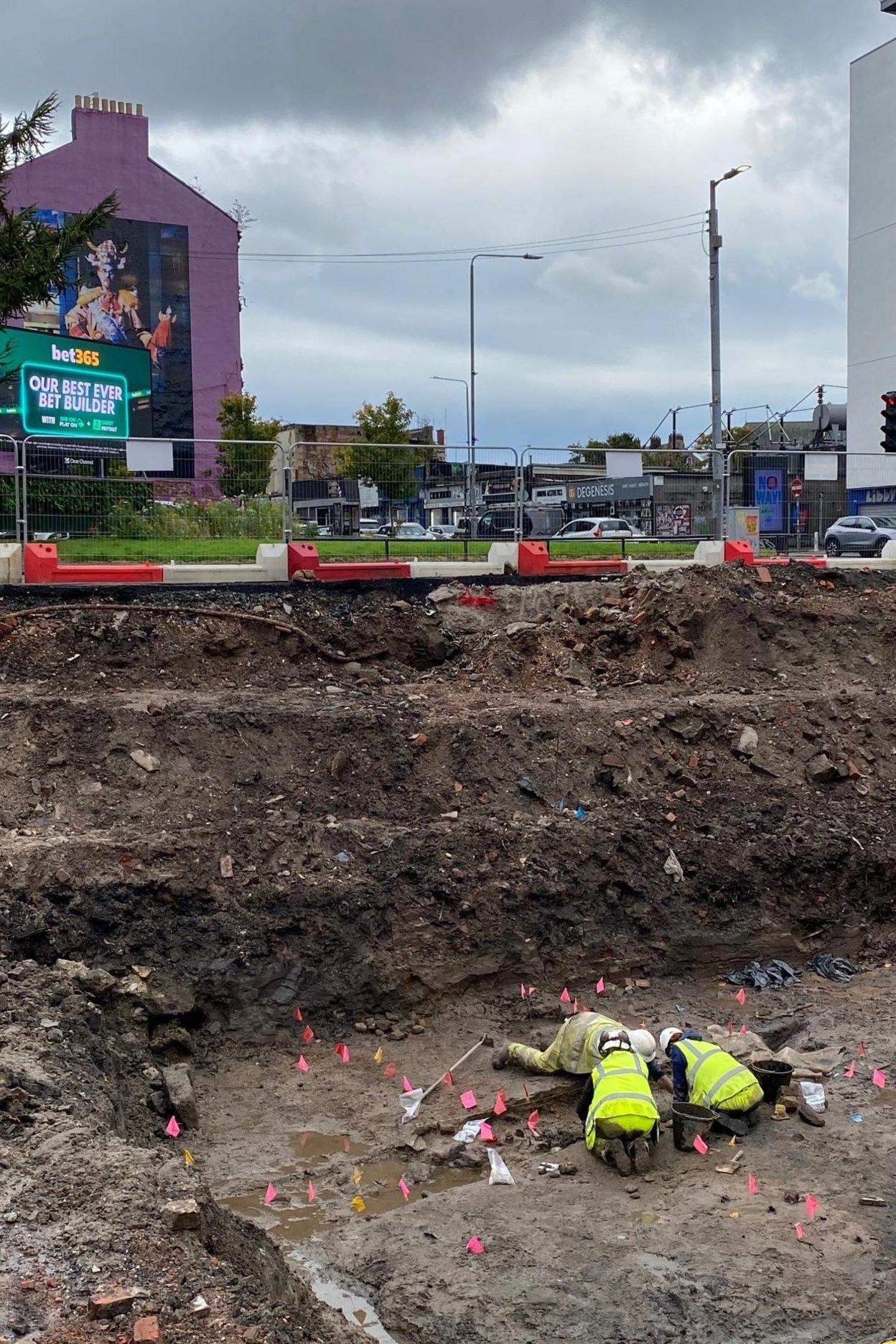
The dig is expected to be completed in November and social housing will be built on the site
The site lay dormant as a car park until Wheatley Group developed plans to build 34 homes for social rent and two commercial units.
The £9.3m development is supported by a Scottish government grant of £5.57m.
As part of the planning conditions, a comprehensive archaeological investigation was required due to the site's location on the edge of medieval Glasgow.
The archaeologists are expected to complete their work by November.
Posts and pottery will be carefully removed from the site and analysed before being given to museums.
Construction will then begin with completion expected by summer 2027.
History of the area
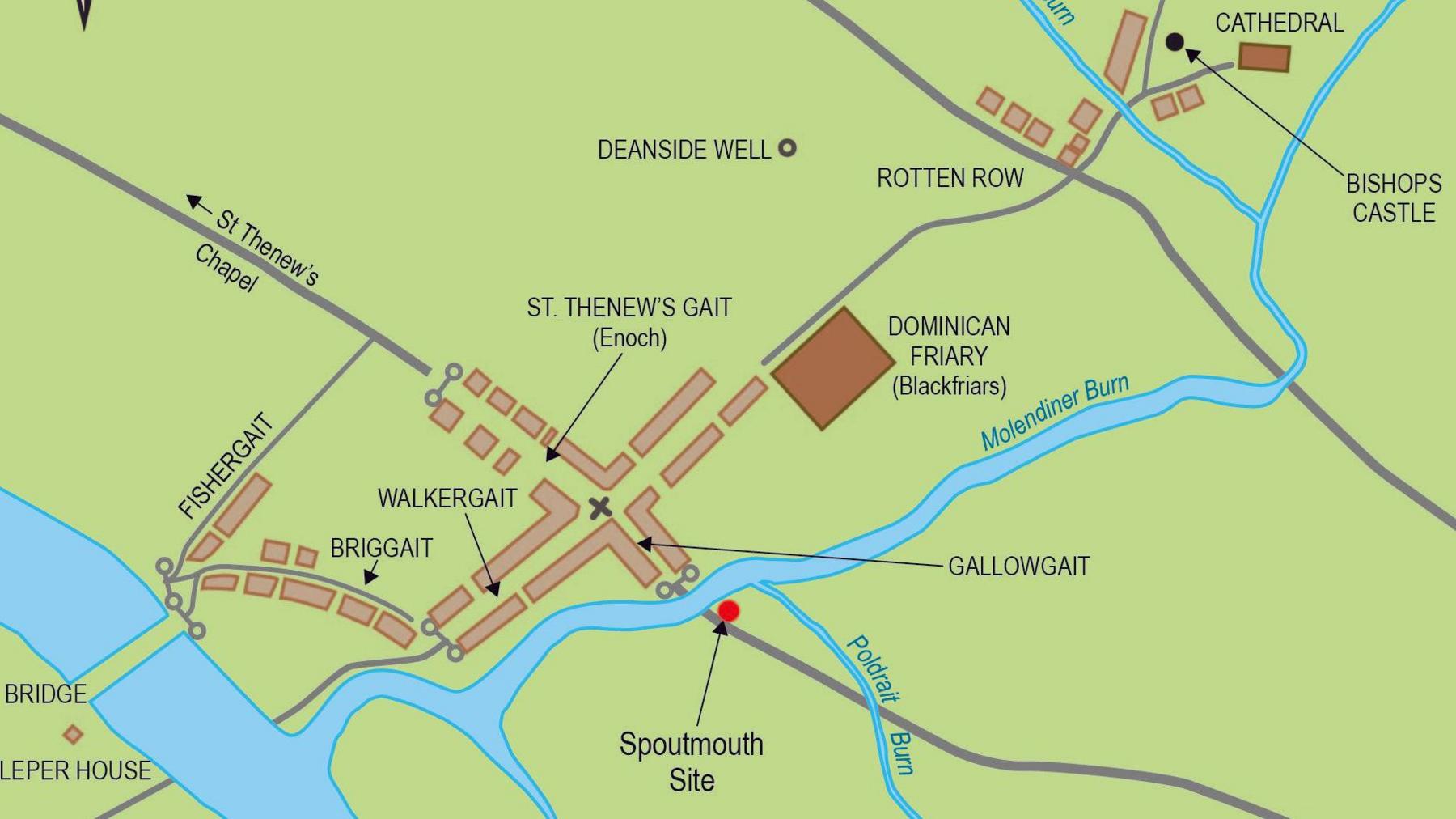
The presumed area of the medieval settlement
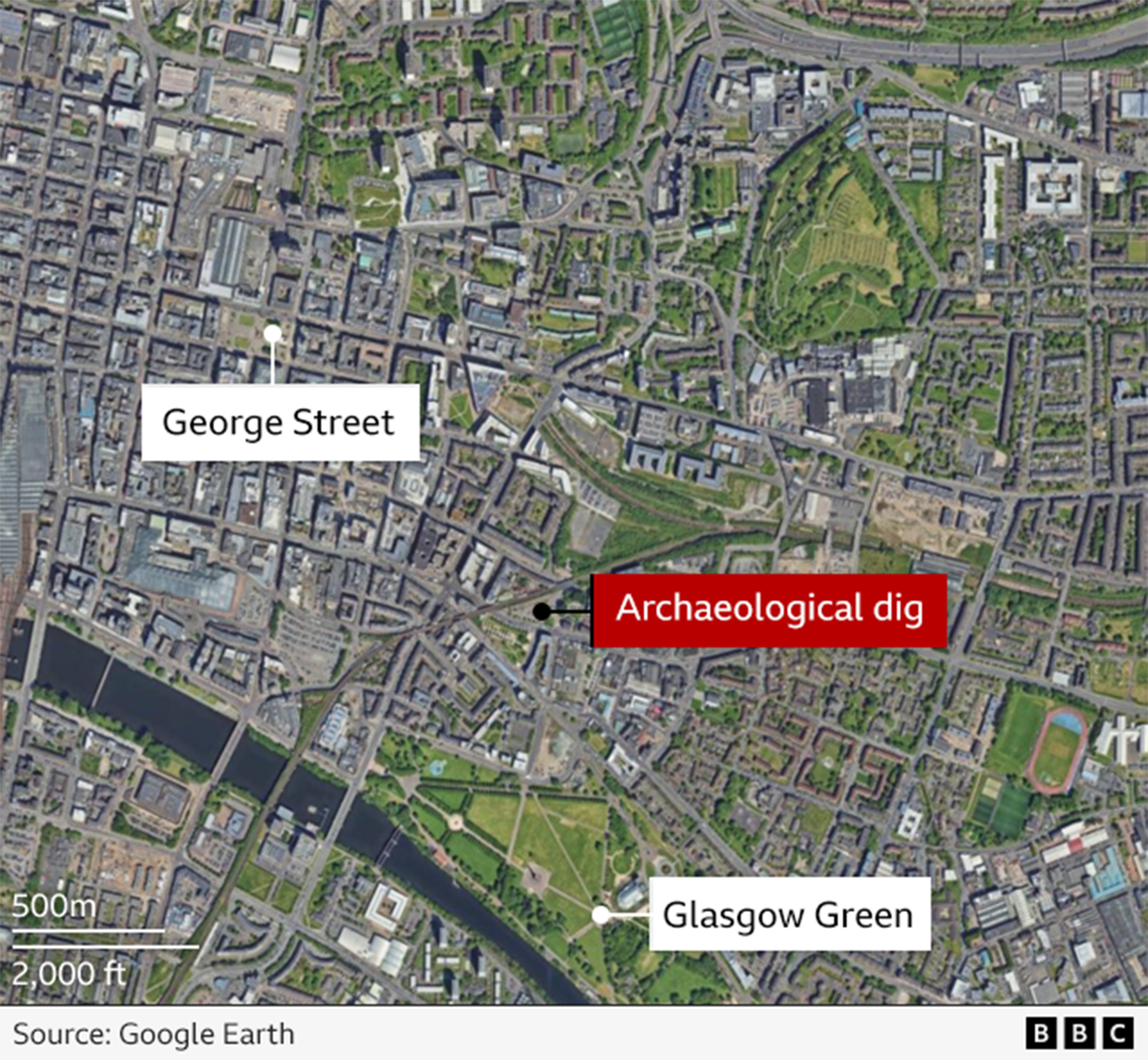
The Spoutmouth site lies on the south side of the former line of the Molendinar Burn, which was once one of the most well-known water courses in Glasgow that drains into the River Clyde.
It now flows underground, having been culverted in the 1800s.
It has associations with St Mungo, who founded his church on its banks in the late 6th Century AD.
By the 12th Century, the newly established bishopric and its cathedral were built not far from there at the top of the High Street.
In AD 1175, King William the Lion granted Glasgow burgh status.
Burghs had been introduced by William's grandfather, David I, and allowed Glasgow economic and legal privileges in return for significant tax contributions to the Royal Exchequer of Scotland.